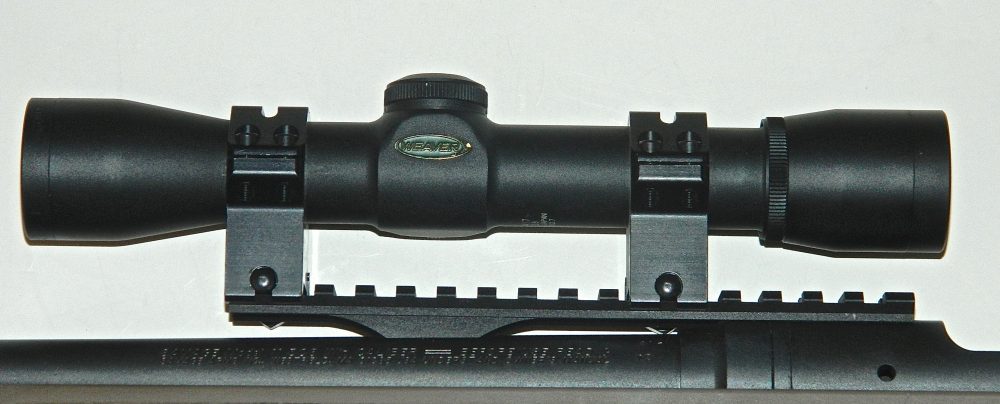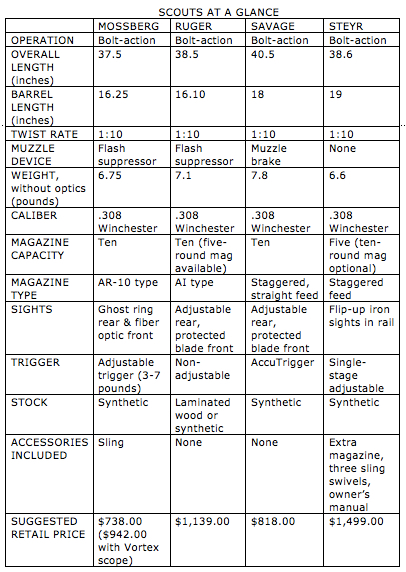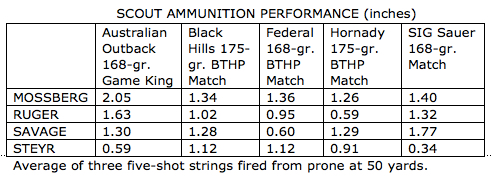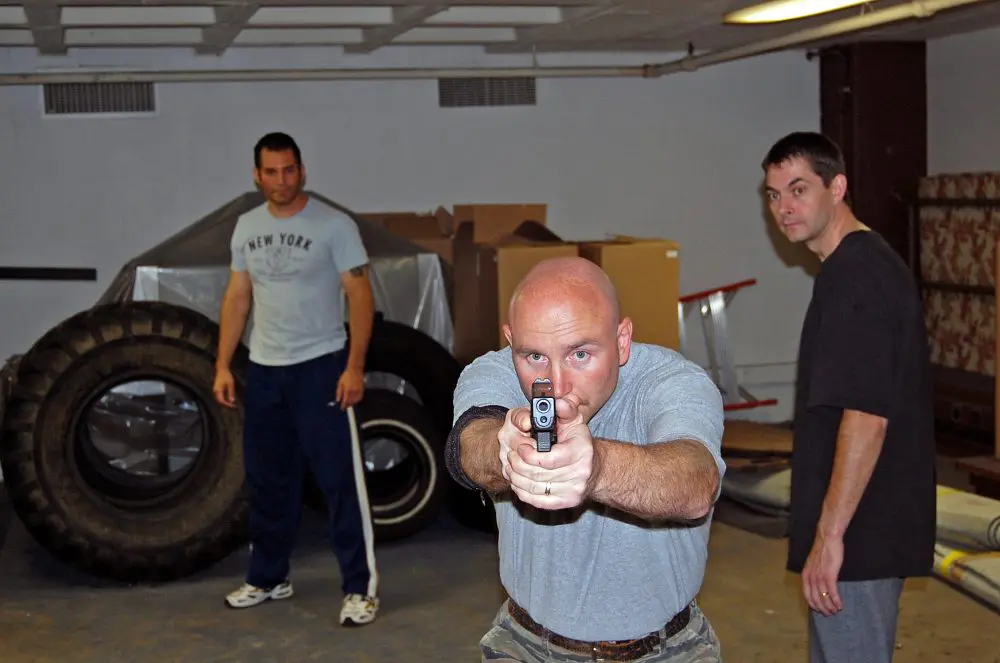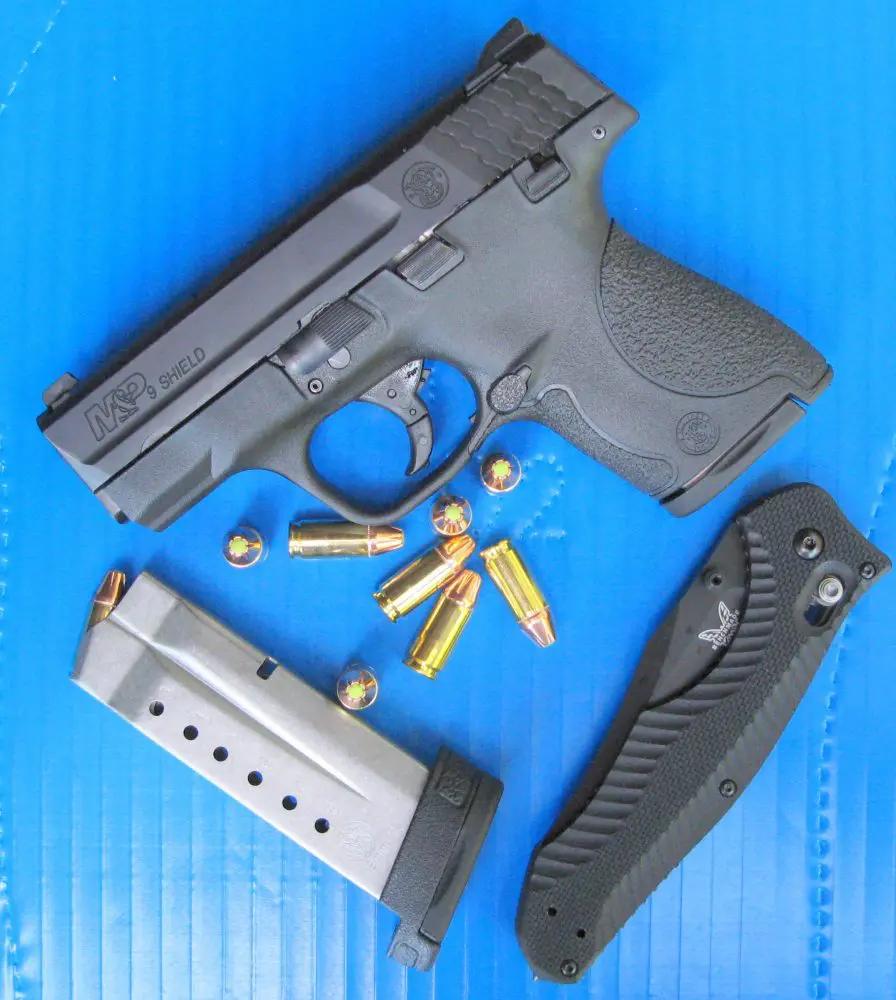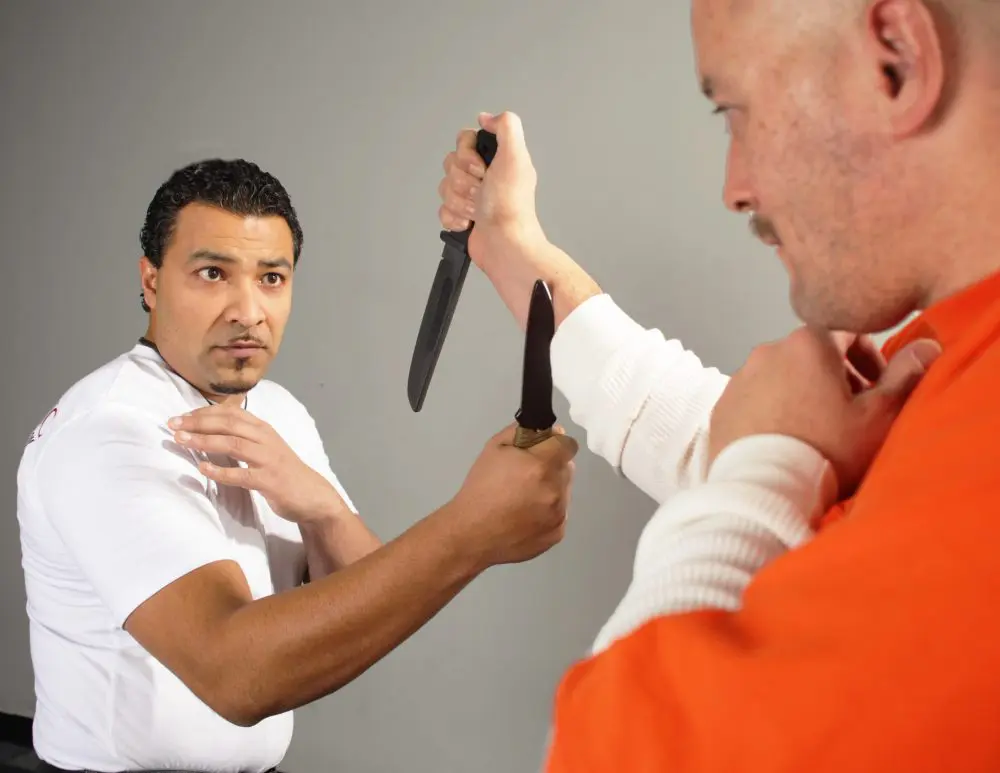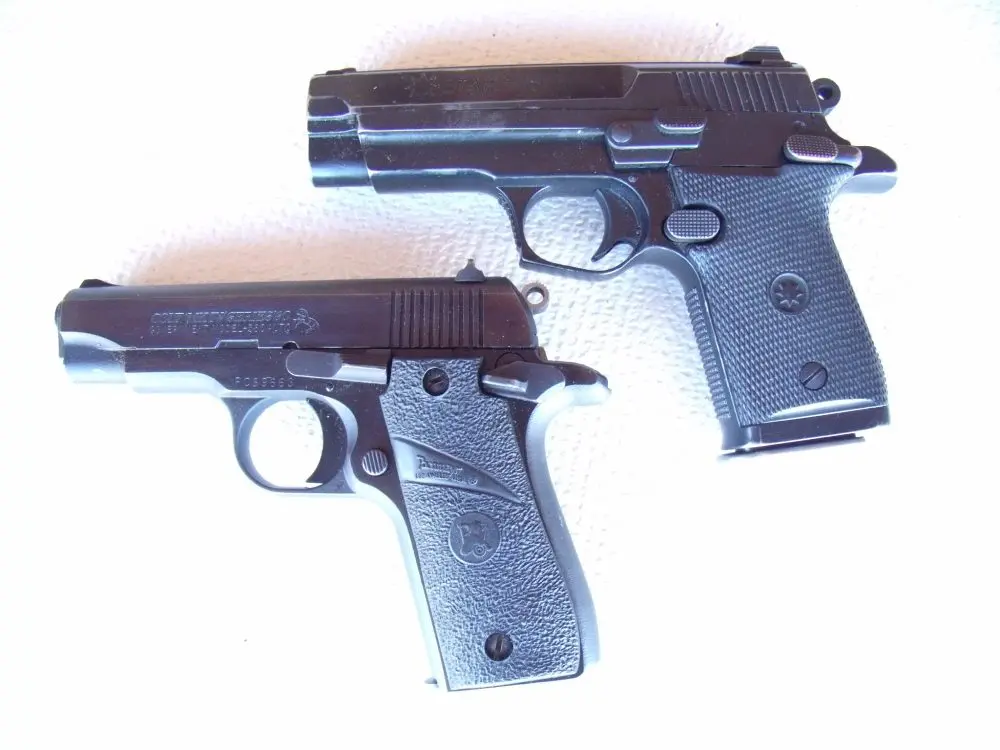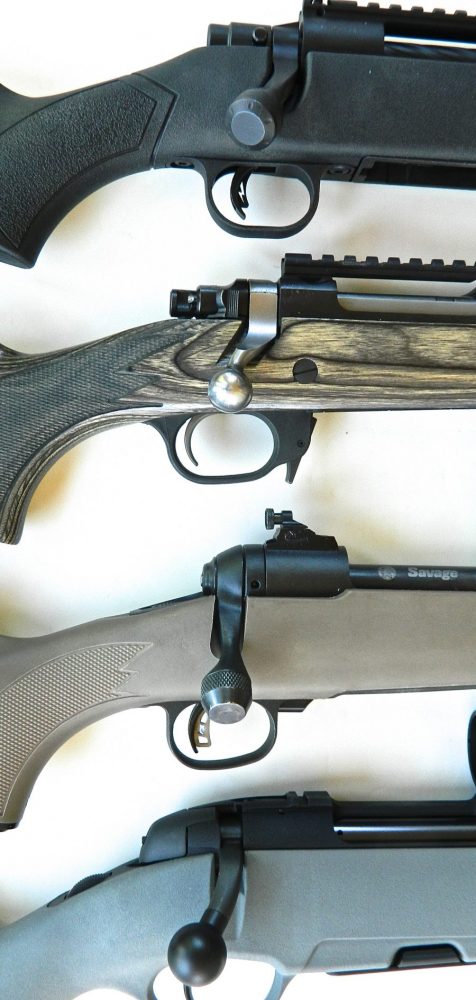
While Col. Jeff Cooper is best known for promoting the Modern Technique of the Pistol, many people do not know he was a rifleman at heart. From his many years of experience, Cooper conceived the concept of the Scout rifle—a light, handy rifle with enough power and accuracy to down a 200-pound target at 200 yards or more.
Numerous articles and entire books have been written on the Scout rifle, so I won’t delve deeply into its history here except to outline Cooper’s general concept of what he thought a Scout rifle should be.
The Scout rifle’s distinguishing features are:
- Magazine-fed bolt action. Detachable box magazine and/or stripper clip charging is desirable but not mandatory.
- Unloaded weight of 6.6 pounds with a maximum weight of 7.7 pounds.
- Overall length of 39 inches or less.
- Forward-mounted long eye relief telescopic sight of low magnification, typically two to three power.
- Reserve iron sights desirable but not mandatory.
- Good trigger.
- Fitted with a practical sling (such as a Ching sling) for shooting and carrying.
- No more power than the .308 Winchester is necessary.
- Built-in bipod is desirable but not mandatory.
- Should be able to shoot into two MOA or less at 200 yards (four inches).
- Magazine capacity not to exceed five rounds.
Several companies make rifles that are marketed as “Scouts” but only four commercial, non-custom offerings are bolt actions: Mossberg, Ruger, Savage, and Steyr. I thought it would be interesting to obtain a sample of each and see how close they come to meeting Col. Cooper’s concept.
In alphabetical order, here’s a description of each.
Mossberg Scout was evaluated with Vortex 2-7X32 Crossfire II Scout Scope.
Table of Contents
MOSSBERG MVP SCOUT
The Mossberg MVP Scout has a 16.25-inch medium bull barrel. The muzzle is threaded and comes with an A2-style flash suppressor. For those who have no need for the flash suppressor, a thread cap is included.
Overall length is 37.5 inches and it tips the scales at 6.75 pounds, making the Mossberg MVP Scout the shortest rifle tested.
Sights for the MVP are a front fiber optic paired with a rail-mounted ghost ring.
Mossberg’s LBA Adjustable trigger (three-seven on MVP models) is standard. The bolt is fluted to reduce weight and allow debris to escape. The bolt handle is elliptical in shape, measures .883 inch at its widest point, and has serrations around its circumference.
The black synthetic stock is pillar bedded. Both sides and the bottom of the forearm, as well as the pistol-grip area, are textured for a sure grip.
Mossberg Scout was evaluated with Vortex 2-7X32 Crossfire II Scout Scope.
An 11-inch Picatinny rail rides atop the receiver for an intermediate eye relief scope. A smaller two-inch rail with five slots is attached to each side of the stock and is removable.
The rifle has a standard two-position safety.
The MVP accepts both M14/M1A and AR-10 style magazines. The rifle ships with one ten-round PMAG. (Magpul offers a PMAG Minus 5-Round Limiter for sporting and hunting applications.) The magazine release is in a recess in front of the magazine. This minimizes the chance of activating the release and losing the magazine.
Mossberg offers the rifle as described above with iron sights and also a model with a Vortex 2-7X32 Crossfire II Scout Scope, which was the one tested here. A nylon sling is included.
Author’s Ruger Gunsite Scout has proven itself on big-game hunts.
RUGER GUNSITE SCOUT
Developed with Gunsite, this rifle features the Gunsite name rollmarked on the receiver and engraved on the grip cap of laminate stock models.
The 16.1-inch free-floated, cold hammer-forged barrel is capped with a Mini-14/SR-556 type flash suppressor. Overall length is 38.5 inches with a weight of 7.1 pounds. There are no flats on the outside of the flash suppressor, but it can be removed by inserting a T60 Torx into the muzzle. The same thread caps that work on the Ruger Guide gun fit the Gunsite Scout. It can be purchased at www.shopruger.com.
The forward-mounted Picatinny rail allows for mounting an intermediate eye relief scope. Ruger’s patented integral scope mounts, machined directly on the receiver, provide a stable mounting surface for traditional over-the-receiver mounting.
Iron sights are a ghost ring adjustable rear aperture sight and a non-glare, protected blade front sight.
The black laminated wood shows a lot of grain on samples I have seen and has checkering on the forearm and pistol-grip area. The stock has three ½-inch spacers to adjust the length of pull (LOP) to accommodate different statures, clothing, or gear.
Ruger Scout rifle was tested with Bushnell 3-9X40 Elite 3200 mounted in traditional rearward position.
A model with a synthetic stock is available, and reduces the weight to 6.2 pounds.
The bolt has a non-rotating, Mauser-type controlled round feed extractor. The bolt handle is round and smooth and measures .760 inch at its widest point.
The GSR uses a three-position safety, where forward is “fire.” In the center “safe” position, the bolt can be worked to load/unload but cannot be fired. In the most rearward “safe” position, the bolt is locked.
Magazine used is the Accuracy International type, and the rifle is supplied with a single ten-round magazine. Five-round magazines are available for hunting. The magazine release is a push-forward lever in front of the trigger guard.
The Ruger Gunsite Scout used for this report was my personal rifle and set up for hunting with a Bushnell 3-9X40 Elite 3200 mounted in the traditional rearward position and equipped with a Galco Safari Ching Sling that does not require a center swivel stud.
Savage Scout not only has spacers in the stock to adjust LOP, but also an adjustable cheek piece and three swivel studs to accommodate a Ching Sling.
SAVAGE MODEL 11 SCOUT
The Savage Arms Model 11 Scout has an 18-inch barrel with a muzzle brake that extends approximately 2.5 inches from the muzzle.
With an overall length of 40.5 inches and weighing 7.8 pounds, the Savage Scout is both the longest and heaviest of the commercially available Scout rifles.
A 6¾-inch Picatinny rail is mounted to the receiver and barrel for an intermediate eye relief scope. Iron sights consist of an adjustable rear ghost ring and a front blade protected by wings.
Savage calls the color of the synthetic stock “Natural” but it’s very close to Flat Dark Earth. The pistol grip and forearm are checkered.
The stock has three spacers to adjust the LOP. Unique to the Savage is an adjustable cheek piece, making it the most user-adjustable stock of the four rifles. The stock also has a center sling swivel stud, so it is only one of two that can use a true Ching Sling out of the box.
Weaver K4 4X28 Scout scope was used with Savage Scout.
The Model 11 Scout uses a three-position safety and the highly acclaimed adjustable AccuTrigger.
The bolt handle goes against tradition, as it is neither round nor smooth but somewhat elongated, with checkering around its circumference. It measures .837 inch at its widest point.
A proprietary ten-round magazine is used. Made of steel, the bottom two-thirds is covered with a tough polymer. It is double stacked inside the body, switching to single feed at the top like most pistol magazines, so that rounds feed straight into the chamber. The magazine release is a lever recessed into the stock just forward of the magazine.
The Savage Model 11 Scout was tested with a Weaver K4 4X28 Scout scope.
Not surprisingly, Steyr Scout rifle comes closest to Jeff Cooper’s concept of a Scout rifle.
STEYR SCOUT
Finally we come to the granddaddy of all commercial Scout rifles—the Steyr Scout. While the other rifles featured here are basically variants from the manufacturers’ line of rifles, thanks to a decade-long collaboration with Jeff Cooper, the Steyr is a Scout purpose-built from the ground up.
The Steyr Scout has a fluted, cold-hammer-forged barrel measuring 19 inches. Overall length is 38.6 inches with an out-of-the-box weight of just 6.6 pounds.
The Steyr’s stock is the only one of the four rifles that does not have checkering on the pistol grip and forearm, though it does feature texturing over the entire stock. Five press-and-twist sling-swivel attachment points allow the addition of a Ching Sling on either side of the rifle.
But we’re not done with the stock yet.
Integrated into the stock is a bipod that is almost invisible until deployed. The rear of the stock houses a second five-round backup magazine. Two spacers allow the user to adjust the LOP.
Steyr Scout was evaluated with Burris 2-7X32 Scout scope.
The Steyr Scout was designed to accept a low-powered, forward-mounted scope for accurate, both-eyes-open shooting. Backup “ghost-ring” iron sights, which fold down into the rail, can be deployed should the optics fail. The rifle can also be fitted with a standard scope if so desired. The test rifle was fitted with a Burris 2-7X32 Scout Scope.
The rifle comes with two five-round magazines. Double stacked with staggered feed, the mags are only two inches high, so they fit flush with the stock.
The magazines can be inserted in two positions. Inserting the rifle into the first catch acts as a magazine cutoff, so the rifle can be fed by inserting a single cartridge in the chamber. Slight pressure fully seats the magazine, allowing rounds to feed from the magazine. The magazines are released from either the mag well or stock by depressing tabs on both sides of the mag.
A “high-capacity” conversion kit and “hi-capacity” magazines are also available to increase carry capacity to 20 rounds.
The Steyr Scout has a three-position safety, but is different from those described above. “Fire” mode is indicated by a red dot, and the first “safe” mode disables the firing mechanism while letting the bolt be cycled. The second “safe” position locks the bolt, at which point the bolt can be pushed down against the stock, locking the firing pin and firing mechanism out of firing position. Pressing the safety’s release tab and rolling it forward return the bolt to either the “safe” or “fire” position.
The bolt handle is round, smooth and the largest of the four rifles, measuring .974 inch at its widest point.
The Steyr Scout is available in Black, Grey, Mud or Green.
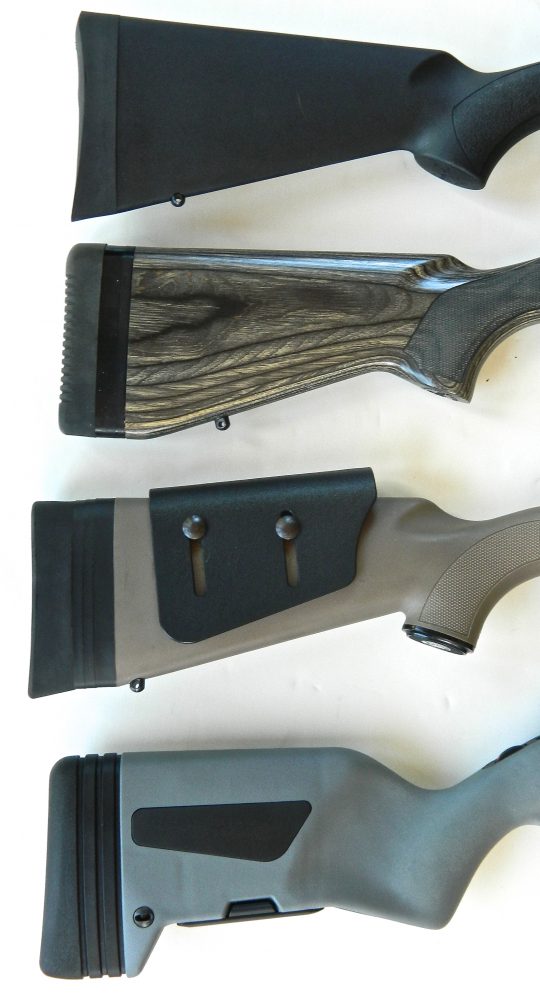
MEETING THE CONCEPT
How closely do the four rifles match Col. Cooper’s concept?
The Mossberg, Ruger and Steyr all fell within the overall length and weight specifications, while the Savage just missed the weight limit by .1 pound, and was over the length by an inch.
As shipped, only the Steyr met the five-round magazine recommendation.
The Savage and Steyr have a center sling attachment point for use with a Ching Sling.
While subjective, in handling the rifles I felt the Steyr had the best trigger, which contributes to accuracy.
The Savage’s bolt was the fastest to operate, but occasionally had a failure to completely eject, leaving the fired case lying in the receiver. The Savage was the easiest to load a single round into the chamber in the event the magazine becomes lost.
Speaking of magazines, a good friend recently bought two Mossberg MVP Scouts because they use the same magazines as his AR .308 rifles, eliminating the need to buy additional mags. Something to consider.
I bought my Ruger Gunsite Scout shortly after it was introduced and have no regrets. The rifle has proven both reliable and accurate. My daughter has taken a good-sized mule deer, and my grandson filled his elk tag with it.
How important are back-up iron sights? Col. Cooper himself opined that they were desirable but not mandatory. Personally I don’t worry about them much because the irons cannot be seen through the scope, and it is unlikely you will have the tools with you to remove a properly torqued scope mount unless quick-detach mounts are utilized. Otherwise, I think the idea of using them in an “emergency” is about as likely as seeing a unicorn dancing on a rainbow. Your mileage may vary.
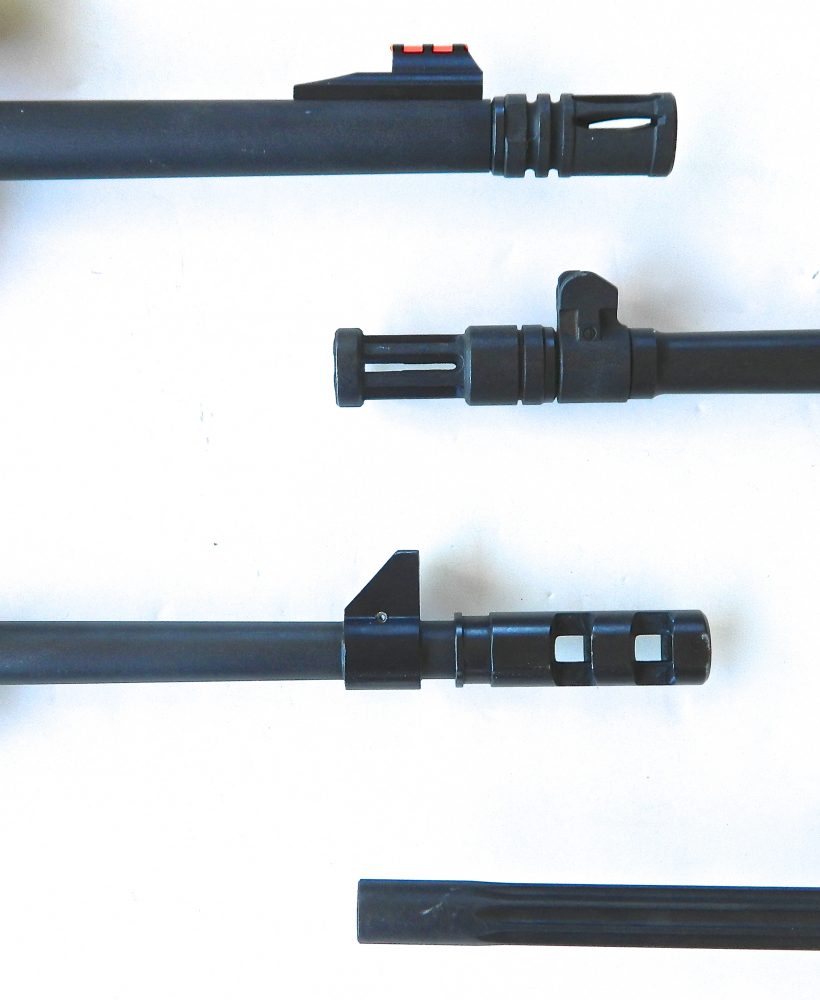
I mentioned earlier that I have a Bushnell 3-9X40 Elite 3200 mounted in the traditional rearward position. While Cooper advocated the use of a forward-mounted long eye relief telescopic sight with low magnification, it has been my experience that the smaller objective lenses on Scout scopes don’t transmit light well. This becomes important in failing light, the time that critters, both four and two legged, begin moving about.
Although three of the rifles come equipped with a muzzle device, this is also something I don’t feel the need for on a Scout rifle. My Ruger usually wears a thread cap.
Some say threaded muzzles offer the ability to add a suppressor. Absolutely correct, but I think it negates the Scout rifle concept of a light, handy rifle.
RANGE ASSESSMENT
Each rifle was fired for an accuracy baseline with five commercial loads. Three five-round strings were fired from each load from 50 yards in prone and averaged for group size. Total group sizes from all five loads were then tallied for a combined average. The results, from best to worst, are as follows.
- Steyr Scout: 1.02 inches
- Ruger Gunsite Scout: 1.37 inches
- Savage Model 11 Scout: 1.56 inches
- Mossberg MVP Scout: 1.85 inches
Not precision rifle results, but the Scout was never intended to be a precision rifle, and all four were within the two MOA criteria for a Scout rifle.
Which rifle is best? That depends on what you plan to use it for, your personal preferences in a rifle, and how much you’re willing to spend.
The rifle that probably comes closest to the good Colonel’s concept is the Steyr, and it was the most accurate. It is also the most expensive.
Steyr Scout was evaluated with Burris 2-7X32 Scout scope.
Right behind the Steyr is the Ruger. Developed in concert with Gunsite, it meets all the Scout criteria.
For folks on a budget, the Mossberg is the least expensive of the commercial Scout rifles, with the Savage costing just a bit more.
The Scout rifle is a firearm that can put meat on the table and be used for defense. In my opinion, it would also be a good choice for a patrol rifle, considering accuracy is usually more important than “firepower” in the form of magazine capacity.
Based on your personal requirements, any of the four rifles evaluated here should serve you well for many years.
SOURCES
O.F. MOSSBERG & SONS, INC.
(203) 230-5300
www.mossberg.com
STURM, RUGER & CO, LTD.
(203) 259-7843
www.ruger.com
SAVAGE ARMS
(413) 568-7001
www.savagearms.com
STEYR ARMS
(205) 417-8644
www.steyrarms.com
AUSTRALIAN OUTBACK AMMO
www.outbackammo.com.au
BLACK HILLS AMMUNITION
(605) 348-5150
www.black-hills.com
BURRIS COMPANY
(970) 356-1670
www.burrisoptics.com
FEDERAL PREMIUM AMMUNITION
(800) 379-1732
www.federalpremium.com
GALCO INTERNATIONAL
(800) 874-2526
www.usgalco.com
HORNADY MFG. CO.
(800) 338-3220
www.hornady.com
NIGHTFORCE USA, INC.
SIG SAUER
(603) 610-3000
www.sigammo.com
VORTEX OPTICS
(800) 426-0048
www.vortex.com





